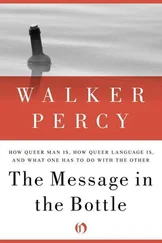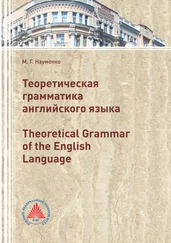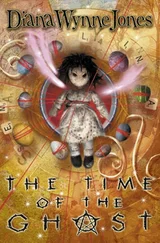Thirty or so disorders — from cancers to errors in foetal development to a tendency towards schizophrenia — have now been uncovered on this short chromosome: a small part of the thousands that inflict the human race, but a hint of the huge numbers of ways that DN A can go wrong. Most of the proteins mapped to chromosome 22 have no known function. What some do can be guessed at by comparing them with others from elsewhere in the human genome, or from the rest ol life, but the majority are anonymous factories, hard at work but with, as yet, no hint about what they made.
Other chromosomes have the same general nature as does the smallest, although each has its quirks. The next in line, chromosome 21, has a personality of its own. Already famous as the sources of the commonest human inborn abnormality, Down's syndrome (present in about one in seven hundred live births) and as the site of one of the genes predisposing to Alzheimer's disease, this structure has some thirty-three million base pairs — about one per cent of the total. One end is stuffed with copies of the same sequence, multiplied again and again; but the other has the machinery. Not, however, very much; for chromosome 21, although about the same size as number 2.2, has only half its number of genes.
Its two hundred and twenty-five working segments (nine-tenths of which were new to science) seem a modest endowment. Perhaps its depauperised state explains why chromosome 21 is the only chromosome (apart from the sex chromosomes) which the body can tolerate in extra copy. Children with Down's syndrome suffer from fifty or more distinct problems, ranging from heart disease and a tendency to leukemia to difficulties in breathing. One severe problem is their premature ageing and memory loss. That symptom resembles those of Alzheimer's disease — and one of the genes responsible for the early-onset form of that illness is found in chromosome 2.1. Perhaps some of the chromosome's other genes will turn out to be associated with other ailments common to Down's children.
Its other genes include those reponsible for two forms of inborn deafness and for amyotrophic lateral sclerosis: a condition known in the United States as Lou Gehrig's Disease after the New York Yankee shiver who died of the illness, but in Britain indissoluhly linked 10 ilu- ^reat physicist Stephen Hawking. Those with the condition suffer from a loss of nerve cells in the brain *** spinal cord and, as a result, slowly lose all power of movement. The problem lies with an enzyme whose job is to clean up wastes inside the cell: when it fails, the nerves are slowly poisoned.
Chromosome 2.1 may look like a run-down industrial estate with few of its windows lit up; but at the other extreme of economic activity, chromosome 6 is full of active genes. It is in the forefront of the body's genetic defences. One section has long been known to be responsible for much of the body's immune defences. The crucial segment is only about a tenth the size of chromosome 2.1, but contains well over a hundred genes (as well as a respectable number of relics that have given up the functional ghost). Many share a certain identity and have arisen by duplication from ancient ancestral genes. Much of their job involves binding to the proteins of an invader and passing on information as to its identity to the white blood cells that then swing into attack. Others code for statements of individual entity on the cell surface.
Because so many genes are involved, there is plenty of opportunity for reshuffling. Combined with a high rate of mutation at many of the individual sequences, this generates a mass of diversity from person to person and from place to place, as a reminder that to sequence a human genome is only a step in the much larger task of looking for differences among individuals. As some of the genes on chromosome six come in as many as two hundred forms the task will be a lengthy one; but it will be worthwhile because, for reasons unknown, some members of the defence force have the habit of turning on the body itself to give a range of auto-immune diseases such as rheumatoid arthritis, the skin disease psoriasis, and some forms of diabetes.
Whatever the details of its individual chromosomes, the picture to emerge from the completed human genome project is one of size, and ol complexity. Like the New World that stretched be!ore the first explorers, the genome is, above all, big; and like all large objects has a gravitational attraction for metaphors. Printed out, the information gathered by the Human Genome Project will fill two hundred telephone books or, in a single line, stretch the length of the Mississippi; a secretary would take twenty years to type (and a cantor fifty to sing) the whole thing, and so, symbolically, on.
Through all the symbolism and hyperbole is emerging an uneasy feeling that all this has been a race only to the starting line of understanding our genes and not to the winning post. The journal Nature reported the analysis of one of the very simplest viralgenomes in the 1970s under the headline 'Sequencing is Not Enough'. That message emerges with renewed strength from the human genome project.
Even so, its completion is a milestone in the history of genetics. To look at an ancient chart — even one as faulty as that of Herodotus — is to realise that maps contain within themselves a great deal about the lives of those who drew them. They show the size and position of cities, the paths of migration, and the record of peoples long gone. The chart of the genes is made; and now the real journey can begin.
Chapter Four. CHANGE OR DECAY
By the time you have finished this chapter you will be a different person. I do not mean by this thai your views about existence — or even about genes — will alter, ilili* >tit',h perhaps they may. What I have in mind is simpler. In ihe next half hour or so your genes, and your life, will he altered by mutation; by errors in your own genetic message. Mutation — change — happens all the time, within ourselves and over the generations. We are constantly corrupted by it; but biology provides an escape from the inevitability of genetic decline.
Evolution is no more than the perpetuation of error. It means that progress can emerge from decay. Mutation is at the heart of human experience, of old age and death but also of sex and of rebirth. All religions share the idea that humanity is a decayed remnant of what was once perfect and that it must be returned to a higher plane by salvation, by starting again from scratch. Mutation embodies what faith demands: each man's decline but mankind's redemption.
The first genes appeared some four thousand million years ago as short strings of molecules which could make rough copies of themselves. At a reckless guess, the original molecule in life's first course, the primeval soup, has passed through four thousand million ancestors before ending up in you or me (or in a chimp or a bacterium). Every one of the untold billions of genes that has existed since then emerged through the process of mutation. A short message has grown to an instruction manual of three thousand million letters. Everyone has a unique edition of the instruction book that differs in millions of ways from that of their fellows. All this comes from the accumulation of errors in an inherited message.
Like random changes to a watch some of these accidents are harmful. But most have no effect and a few may even be useful. Every inherited disease is due to mutation. Now that medicine has, in the western world at least, almost conquered infection, mutation has become more important. About one child in forty horn in Britain has an inborn error of some kind and about a third of all hospital admissions of young children involve a genetic disease. Some damage descends from changes which happened long ago while others are mistakes in the sperm or egg of the parents themselves. Everyone carries single copies of damaged genes which, if two copies were present, would kill. As a result, everyone has at least one mutated skeleton in their genetical cupboard.
Читать дальше
Конец ознакомительного отрывка
Купить книгу












